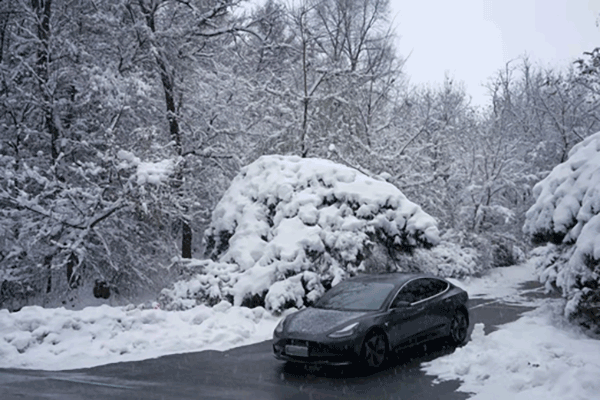According to statistics, 17% of all car accidents in the United States occur in the winter. In addition to driving carefully, drivers should also be prepared for the harsh winter weather. This article will give you enough tips to help drive your electric vehicle more safely in the winter.

The effect of severe cold on electric vehicles
When the temperature drops below 40 degrees, your electric vehicle’s battery produces less current. If the battery is not fully charged, it can be almost completely drained in hours if left in cold weather.
When it drops below 20 degrees, it can significantly reduce the range of an electric vehicle. According to AAA, driving at or below that temperature and using the car’s heating system can reduce the average EV’s capacity by 41 percent. This means that it is essential that drivers living in colder regions take the necessary protective measures during the winter months.
Consider these 6 tips for winterizing your EV:
- Charge Smartly
Be sure to think ahead and plan out when you’ll need the most charge for your car. If you need to leave early for work and it’s going to be below 40 degrees overnight, set the overnight charge so that it finishes as close to when you need to leave as possible instead of charging it the night before.
- Park your car indoors
It’s easier to park outside or on the street, but the relative warmth of the interior helps the battery maintain more range.
- Pre-heating treatment
Another best practice for avoiding winter range loss is preconditioning. When your car is plugged in, you can start warming up the battery so that it isn’t cold by the time you start driving. This system can also increase the temperature of your car’s interior, making those chilly morning commutes more bearable. Since your vehicle is being heated with the power of a charging unit, you can save the battery’s energy for driving.
Many EV models have an app or key fob that’ll allow you to initiate preconditioning remotely. Plus, you can set up recurring departure times, so the car knows when it should start heating itself.
- Choosing winter tires
While all-season tires are convenient for many people, your car will be better equipped with winter tires for improved safety and efficiency. Remember that electric vehicles tend to be heavy, making them more challenging to maneuver in slippery conditions. Winter tires will give you maximum grip when driving on snow and ice-covered roads, so you don’t have to worry about skidding or getting stuck.
Also, tire pressure has a significant impact. For every 10-degree drop in ambient temperature, tire pressure decreases by 1 pound per square inch (PSI). The colder the weather, the lower the PSI of your tires. Maintaining optimal air pressure is essential and can improve your vehicle’s energy efficiency by 3-7%.
- Purchase an EV with a heat pump
Heat pumps use less power than conventional air conditioning systems, which makes them especially helpful over the winter. In 2013, Nissan was the first brand to introduce this technology, and now, many car brands include heat pump systems in their EV models.
Heat pumps absorb heat from the atmosphere and compress it with a refrigerant circuit. This exchange increases the cabin heat, allowing warm air to be blown into the car. Without consuming electricity from the battery and reducing driving range, a heat pump system raises the temperature in your car, making it a more efficient option when cold weather strikes.
- Watch your speed
There are two reasons why you should not drive fast in winter. Conditions are more dangerous for beginners. The roads can be slippery, and your view can be blocked by rain, snow, and fog, increasing your likelihood of losing control and having an accident.
Second, higher speeds will force your battery to work harder, which will use up more of your range. As mentioned earlier, conserving battery power is especially important in cold weather. So, to maintain efficiency, avoid highway driving if possible, but if you must, try to keep your speed below 65 miles per hour.
As long as you pay attention to the above six points, you can avoid most of the troubles that occur in the winter. But if you have the misfortune of breaking down or other situations, the best option is to call a tow truck or a rescue team that provides mobile charging services.














